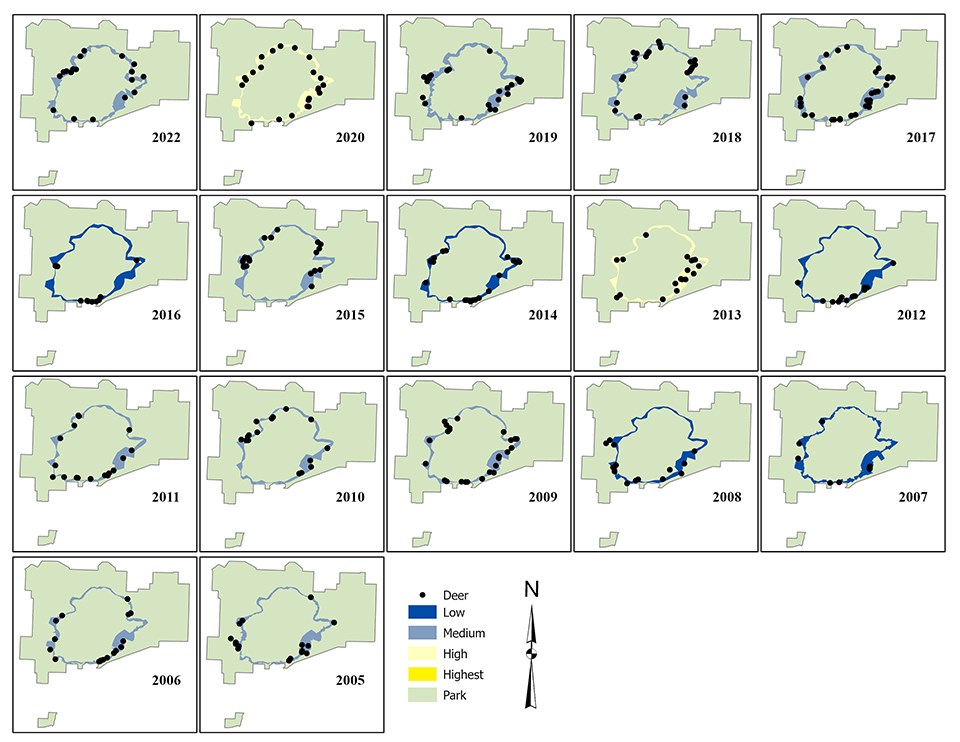Last updated: August 4, 2022
Article
Deer Monitoring at Pea Ridge National Military Park
Visitors enjoy viewing the many deer that roam the park. They are one of the larger and more charismatic creatures encountered. It is hard to imagine that deer were almost extinct in the early 1900s from over hunting. Deer are very adaptable to human disturbance, however, and have since recovered in numbers. When deer populations get too large, the threat of disease, damage to the park’s landscape, and collisions with deer on nearby highways increase.

NPS

NPS
NPS scientists monitor deer at the park using nighttime spotlight surveys. Deer populations have experienced annual to biennial periods of declines or recoveries over the course of our monitoring at the park. A sharp decline in the population between 2005 and 2007 coincided with an outbreak of hermorrhagic disease. The decline between 2020 and 2022 coincided with deer dying from undocumented causes. Reasons for other declines are also unknown. Recoveries occurred as rapidly as declines but were not sustained for more than two years (e.g., 2007–2009 and 2018–2020). Even with the observed declines and short periods of recovery, the overall deer population increased 2.7% annually but this change was not statistically significant. We need more data to know if the population is changing. The number of deeer adjusted for area surveyed ranged from a low of 15 individuals per square kilometer in 2007 to 60 individuals per square kilometer in 2020.
Read the Full Report.
Learn more about the Heartland Inventory and Monitoring Network.
Data in this report were collected and analyzed using methods based on established, peer-reviewed protocols and were analyzed and interpreted within the guidelines of the protocols.
Learn more about the Heartland Inventory and Monitoring Network.
Data in this report were collected and analyzed using methods based on established, peer-reviewed protocols and were analyzed and interpreted within the guidelines of the protocols.
